 Toolik Lake Pano! Photo by DJ Kast
Toolik Lake Pano! Photo by DJ Kast
Today, we sampled the inlets or main water sources of Toolik Lake. Today's research team included: Jason Dobkowski, Graham Stewart, Chris Cook, Johanne Albrigtsen, Dr. Kim Bernard, Dr. Byron Crump, and myself.
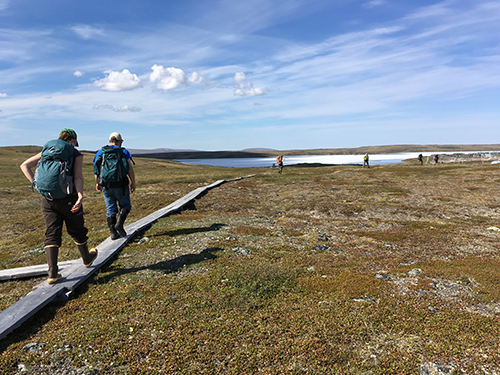 Arctic Tundra researchers marching on the boardwalk to their water sample sites. Photo by DJ Kast
Arctic Tundra researchers marching on the boardwalk to their water sample sites. Photo by DJ Kast
The inlets are right behind the camp less than a kilometer!
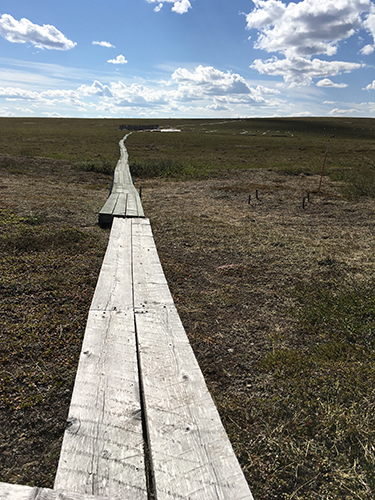 Boardwalk on the Arctic Tundra to water sample sites. Photo by DJ Kast
Boardwalk on the Arctic Tundra to water sample sites. Photo by DJ Kast
We have to wear bug gear in the field.
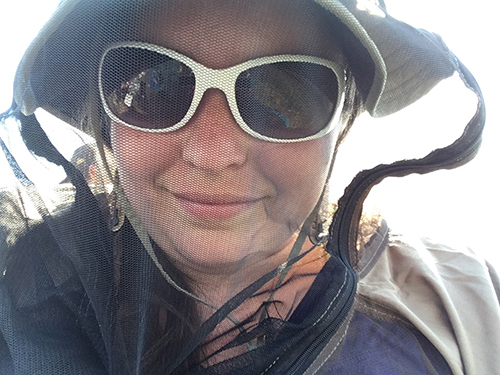 Selfie with bug gear on to prevent mosquito bites. Photo by DJ Kast
Selfie with bug gear on to prevent mosquito bites. Photo by DJ Kast
We stopped at four main sites: i7-i9 Inlet, i8-i9, Milky Way Lower, and Toolik Inlet.
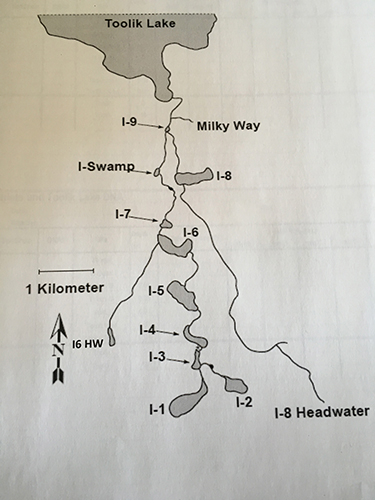 The sites at which water samples and analysis occur as part of the Long Term Ecological Research program (LTER) in Toolik. Photo by DJ Kast
The sites at which water samples and analysis occur as part of the Long Term Ecological Research program (LTER) in Toolik. Photo by DJ Kast
First sample site: i7-i9 Inlet.
Second Sample Site: i8-i9
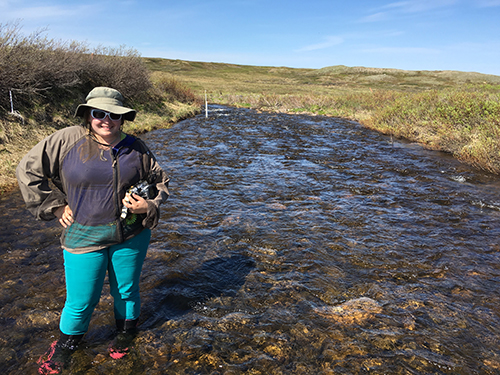 Standing in the i8-i9 inlet waiting to collect samples. Photo by DJ Kast
Standing in the i8-i9 inlet waiting to collect samples. Photo by DJ Kast
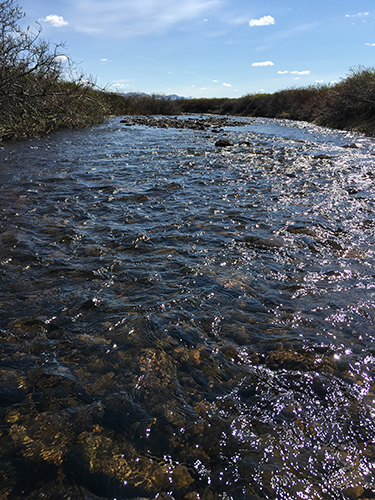 The i8-i9 inlet. Photo by DJ Kast
The i8-i9 inlet. Photo by DJ Kast
Third Sample site: Milky Way Lower
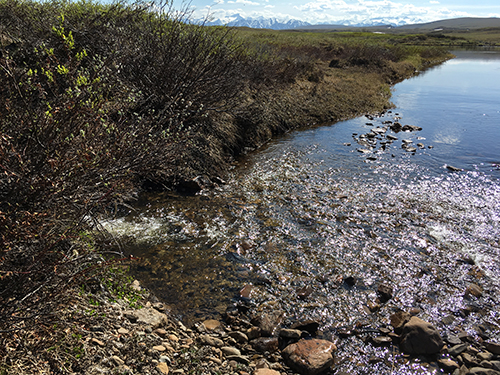 Milky Way coming in! Photo by DJ Kast
Milky Way coming in! Photo by DJ Kast
Fourth sample site: Toolik Inlet
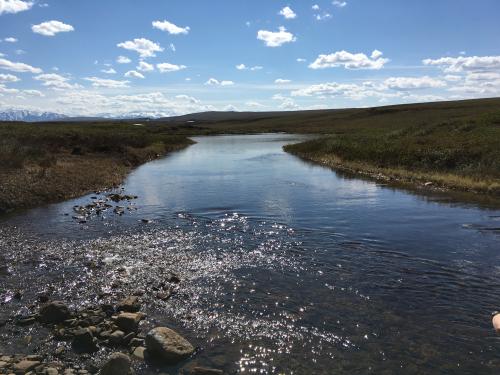 Toolik Inlet Stream Photo. Photo by DJ Kast
Toolik Inlet Stream Photo. Photo by DJ Kast
Graham, Chris and Jason collected water samples for chemical purposes, which includes filtering them for nitrogen, phosphates, carbon, chlorophyll, cations/anions, alkalinity, temperature and conductivity.
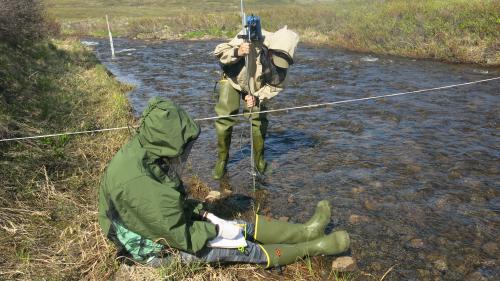 Chris measuring flow rate at half meter intervals while Graham records the data. Photo by DJ Kast
Chris measuring flow rate at half meter intervals while Graham records the data. Photo by DJ Kast
They collected data from stream’s hydrology by collecting the depth and flow rates. They used these data points to create a 2-dimensional data visualization of what the stream looks like at a particular transect.
Dr. Byron Crump, Dr. Kim Bernard, Johanne Albrigtsen, and myself collected water samples from midstream (where water was flowing) with a brown Nalgene bottle.
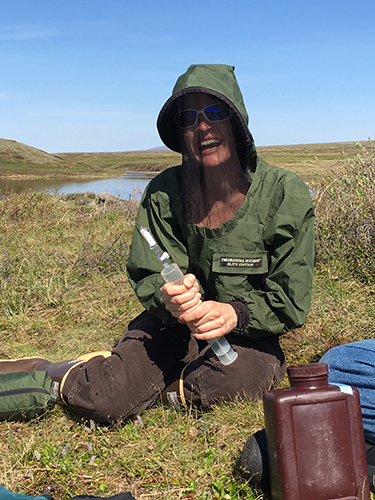 Dr. Kim Bernard filtering water samples with syringes. Photo by DJ Kast
Dr. Kim Bernard filtering water samples with syringes. Photo by DJ Kast
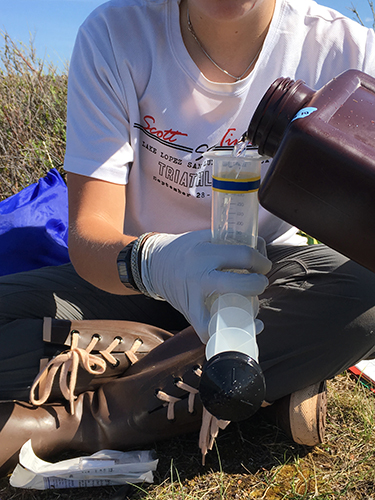 Pouring water sample into syringe to prepare for filtering. Photo by DJ Kast
Pouring water sample into syringe to prepare for filtering. Photo by DJ Kast
We used syringes with 3-way stop-cocks, to collect the microbes in the water onto a filter. This process get microbes stuck on the filter and the water runs through. We then add a buffer to kill them and preserve their DNA for later processing in the lab.
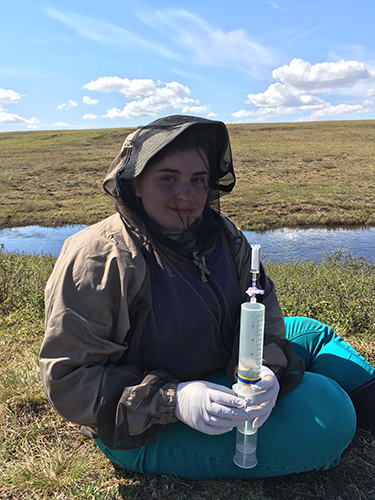 DJ Kast filtering water samples with a syringe and filter. Photo by DJ Kast
DJ Kast filtering water samples with a syringe and filter. Photo by DJ Kast
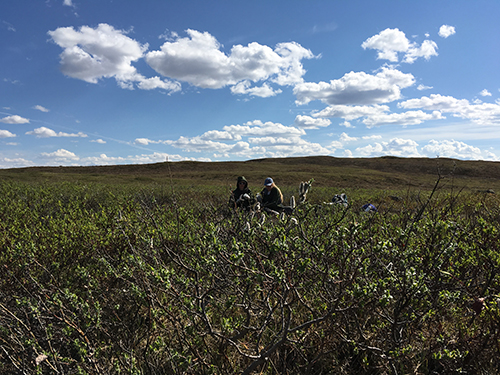 Toolik inlet with Dr. Kim Bernard and Johanne A. Photo by DJ Kast
Toolik inlet with Dr. Kim Bernard and Johanne A. Photo by DJ Kast
The two research teams work together! Dr. Crump uses the water chemistry information help identify why various groups of microbes. The chemistry of the water affecting the diversity of microbial species along the watershed.
Within the watershed, streams and lakes have different bacteria, and have different chemistry. They have different bacteria because their food is different. Streams have more organic matter coming from the soil. Lakes have more organic matter coming from algae. For example, some of the lake bacteria eat the organic matter that algae leak. These ideas are crucial when studying microbial biogeography and understanding how quantities/ diversity of microbes change around different parts of the watershed and why.
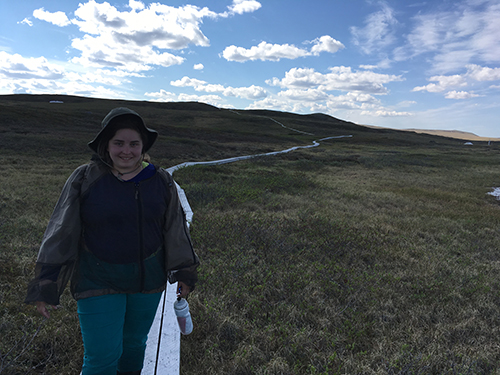 Walking on the boardwalk in the Arctic Tundra. Photo by DJ Kast.
YSP Flag
Walking on the boardwalk in the Arctic Tundra. Photo by DJ Kast.
YSP Flag
Fourth graders from Ms. Morris's classroom at Vermont Elementary's flag at Toolik Inlet.
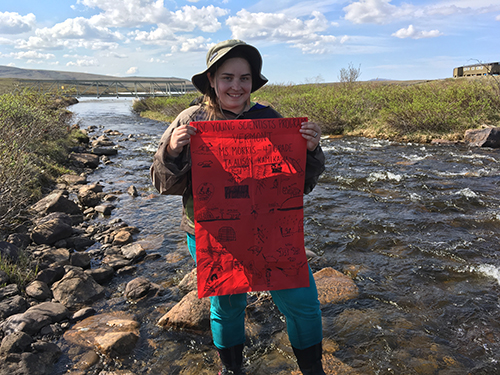 Representing the polar flag of the fourth grade students in Ms. Morris' classroom (with YSP TA Alison Kamikawa) at Vermont Elementary. Photo by DJ Kast
Representing the polar flag of the fourth grade students in Ms. Morris' classroom (with YSP TA Alison Kamikawa) at Vermont Elementary. Photo by DJ Kast
Fifth graders from Ms. Bernato's classroom at Norwood Elementary flag at Toolik Inlet.
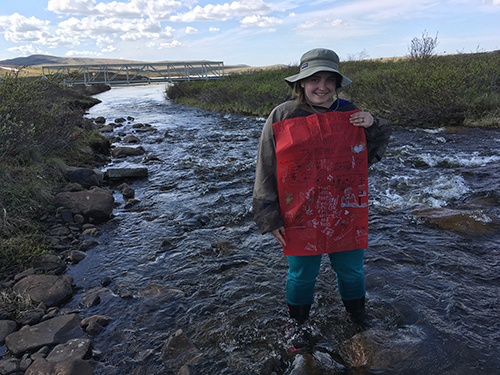 Representing the polar flag of the fifth grade students in Ms. Bernato's classroom (with YSP TA Michael Qian) at Norwood Elementary. Photo by DJ Kast
Representing the polar flag of the fifth grade students in Ms. Bernato's classroom (with YSP TA Michael Qian) at Norwood Elementary. Photo by DJ Kast

Comments